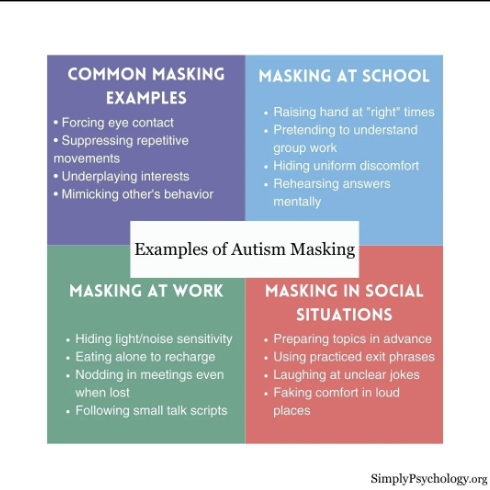Socializing and Friendships
1/14
There's no tags or description
Looks like no tags are added yet.
Name | Mastery | Learn | Test | Matching | Spaced |
|---|
No study sessions yet.
15 Terms
autistic individuals can
make friends
engage in social interactions
make meaningful connections with others
be a part of the community/group
Myth: autistic people don’t have friends
Autistic people can often make friends but rarely make close friends
This can lead to feelings of loneliness
Autistic individuals may struggle to maintain friendships
May struggle to understand the actions needed to socialize with others
call them regularly etc.,
Most friendships are based on shared activities or common interests
Myth: Autistic people are rude on purpose
Autistic people tend to be direct and transparent
May communicate clearly and directly
This may come across as a blunt or harsh communication style
Most Autistic individuals are trying to show they care about the person they are interacting with
Emotional exchanges may be limited and emotional closeness may be difficult to establish
Myth: Autistic people don’t have social needs
Everyone has a desire to communicate and be social
However, individuals with Autism may be okay spending lots of time alone.
Myth: Autistic people only struggle w/ verbal socialization
Social skills can be a struggle across contexts
Understanding internet relationships
Communicating in written versus verbal formats
Myth: Autistic individual cannot participate in group activities
Autistic people report feeling misunderstood and excluded from social groups.
This does not mean they can’t participate
When people make an effort to understand Autistic experiences, Autistic people can feel more included and less isolated.
Challenges
Communication differences, sensory sensitivities, and unfamiliarity with neurotypical social norms can impact forming and maintaining friendships.
Establishing appropriate topics can be challenging.
Understanding nonverbal communication, abstract language, humor, etc.
Anxiety and depression may play a factor.
Sensory Overload
Sensory issues can impact how individuals participate in social activities.
Sensory overload may be negatively perceived by peers.

Masking in Social Interactions
Some individuals may “hide” their Autistic traits in order to fit in socially.
This may help them participate in social interaction for short periods of time.
May lead to physical and mental exhaustion
Relationships may feel unauthentic or “one sided”
Some examples may include:
Forcing eye contact, suppressing repetitive movements, underplaying interests, mimicking other’s behavior, forcing facial expressions, having a social script
Can you think of other examples?
Autistic Individuals may
prefer fact focused interactions
be perceived as '“brutally honest”
have a preference discussing interests
prefer slower paced conversation
prefer direct conversation
be comfortable playing alongside a friend
Remember: Miscommunication goes both ways
Communication breakdowns can occur for multiple reasons
Can arise from misunderstandings from both or either communication partner
Neurotypical communication partners may struggle to understand neurodiverse communication styles.
If a breakdown occurs, we must look at both sides of communication and what is happening.
Acknowledge when you are wrong or do not understand
Learning about autistic communication and social differences can help.
Promoting Social Interaction
Connect - make connections between individuals with similar interests or experiences.
Understand appropriateness - how is the child interacting? What function do certain behaviors play? How can we shape into more “appropriate” interactions?
Focus on quality- Finding one or two supportive friendships can be most meaningful.
Promoting social interactions (set expectations)
Set expectations - teach children strategies to help when situation are challenging. Set clear rules for social interactions.
Teach initiation- practice skills in multiple settings
Reinforce - what goes well socially, if appropriate reflect on what didn’t go well.
Focus on functional
Functional Social Skills
Functional social skills are those skills that students need to participate in everyday life.
We can support functional skills by looking at the contexts and situations the child is exposed to throughout the day and what they need.
May vary from context to context.
We can use other support such as visuals, Social Stories, etc.
Give the student social knowledge to interact with a range of people in a range of situations.
Focus on self awareness and self reflection.
Functional social skills examples by age
What social skills would an Autistic preschooler need?
Initiation, play skills, requesting, denying, communicating body needs/emotions,
What social skills would an Autistic school aged student need?
Transitions, cafeteria, team work, knowing when to talk, joint attention, sharing/game play,
What social skills would an Autistic teen need?
Following directions, read sarcasm, knowing how to switch tones, sensory regulation, navigating peer drama, dating, turning in assignments on time, oral presentations, extracurricular activities, navigating digital spaces, puberty, advocacy
What social skills would an Autistic adult need?
Jobs, interviews, calling to make appointments, understanding responsibilities, cooking/cleaning, relationships, talking to professionals (healthcare), problem solving